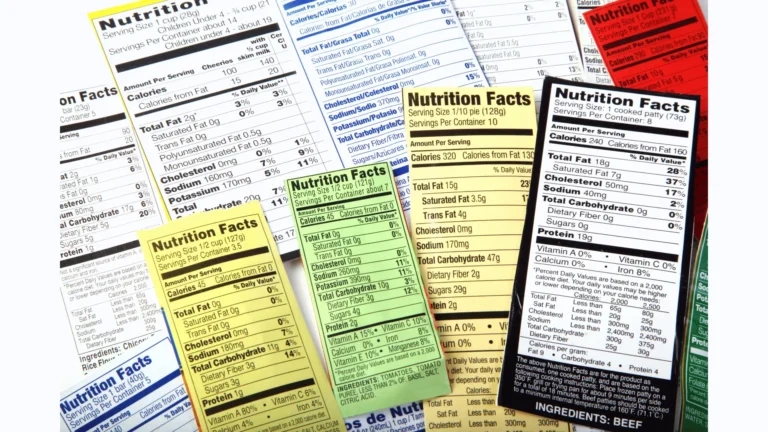Tyramine, a naturally occurring compound found in various foods and beverages, has garnered increasing attention for its potential to cause health issues, especially for individuals who are sensitive to it or those taking specific medications like monoamine oxidase inhibitors (MAOIs). In this comprehensive 1500-word guide, we will delve deep into the world of tyramine. We’ll explore its composition, effects on the body, and provide detailed strategies on how to get rid of tyramine in the body, minimizing the risk of associated health problems.

Unraveling Tyramine's Composition
Tyramine, classified as a biogenic amine, originates from the breakdown of the amino acid tyrosine within certain foods as they age or undergo fermentation. This naturally occurring compound is most commonly found in aged cheeses, cured meats, fermented beverages, and select fruits and vegetables. While tyramine is generally considered safe in moderation, excessive intake can lead to a range of health concerns, including headaches and elevated blood pressure.
The Significance of Tyramine Management
Excessive consumption of tyramine-rich foods can have several adverse effects on health:
- Migraine Triggers: Tyramine has been linked to migraine headaches, particularly in individuals who are sensitive to it. The ingestion of tyramine-rich foods can lead to the onset of severe headaches.
- Blood Pressure Concerns: Tyramine can provoke an increase in blood pressure levels, which poses a considerable risk for individuals with hypertension or those prescribed MAOIs. In such cases, excessive tyramine intake can trigger a hypertensive crisis.
Strategies for Effective Tyramine Elimination
Managing your tyramine intake is pivotal for maintaining optimal health. Here, we provide in-depth strategies on how to get rid of tyramine in the body effectively:
1. Prioritize Fresh Food Choices

Opt for fresh foods over their aged or fermented counterparts. Fresh fruits, vegetables, and lean proteins are naturally low in tyramine and are less likely to contribute to its accumulation in the body.

When shopping for packaged foods, conduct a thorough examination of food labels. Avoid products that contain substantial quantities of tyramine-rich ingredients, such as aged cheese or fermented soy products.
3. Master the Art of Food Storage for How to Get Rid of Tyramine in the Body
Proper food storage plays a crucial role in managing tyramine intake. Storing perishable items in the refrigerator slows down the conversion of tyrosine into tyramine. This applies to meats, dairy products, and leftovers.
4. Prudent Food Selection
If you are particularly sensitive to tyramine or taking MAOIs, exercise caution when selecting foods. It is advisable to abstain from consuming foods well-known for their high tyramine content, including aged cheeses, smoked or cured meats, and specific alcoholic beverages like red wine and beer.
5. Mindful Cooking Techniques
Your choice of cooking methods can significantly impact tyramine levels in your meals. Opt for fresh ingredients and cooking techniques that minimize tyramine formation. Avoid practices such as fermentation and aging in your culinary endeavors.
Tyramine Metabolism in the Body
Understanding how the body processes and eliminates tyramine is essential in managing its levels effectively. The liver plays a pivotal role in metabolizing tyramine, breaking it down into harmless byproducts, which are subsequently excreted through urine. However, individuals with compromised liver function or specific genetic conditions may face challenges in processing tyramine efficiently. For them, meticulous dietary tyramine management becomes even more critical.
The Role of Gut Bacteria
Another crucial aspect of tyramine metabolism lies in the gut. The gut microbiota, the community of microorganisms residing in your digestive tract, also plays a role in the breakdown of tyramine. Certain gut bacteria possess enzymes capable of metabolizing tyramine, potentially reducing its absorption into the bloodstream. Consequently, maintaining a healthy gut microbiome through a balanced diet rich in fiber and fermented foods may aid in tyramine management.
Foods to Embrace and Avoid
When embarking on a journey to eliminate tyramine from your diet, it’s essential to distinguish between foods to embrace and those to avoid:

21 DAYS
TO A SLIMMER, SEXIER YOU!
THE SMOOTHIE DIET is a revolutionary new life-transformation system that not only guarantees to help you lose weight and feel better than you have in years, it also promises to eliminate more body fat – faster than anything you’ve tried before.
Foods to Embrace
Fresh Fruits and Vegetables: Opt for fresh, unprocessed fruits and vegetables, which are typically low in tyramine. These include apples, pears, grapes, broccoli, and leafy greens.
Lean Proteins: Choose lean cuts of fresh meat, poultry, and fish. Avoid processed or cured meats.
Dairy Products: Opt for fresh dairy products such as milk, yogurt, and cottage cheese, which have lower tyramine content compared to aged cheeses.
Grains: Most bread, pasta, and grains have low tyramine levels and can be included in your diet.
Beverages: Enjoy decaffeinated coffee, tea, or soda, as they have lower tyramine levels. Additionally, fresh or soy milk, bourbon, gin, rum, and vodka are suitable choices.
Foods to Avoid

Aged Cheeses : Stay away from aged cheeses like cheddar, Stilton, blue, Camembert, Swiss, feta, Muenster, and Parmesan.
Processed Meats : Avoid dry sausages, salami, pickled or smoked fish, caviar, aged chicken livers, and soups or gravies made from meat extract.
High-Tyramine Fruits and Vegetables : Limit your consumption of high-tyramine fruits like oranges, grapefruit, lemons, and limes. Also, avoid high-tyramine vegetables such as sauerkraut, fermented soy foods, and raw onions.
Alcoholic Beverages : Vermouth, tap beers, and red wine are higher in tyramine and should be avoided or consumed in moderation.
Certain Condiments : Concentrated yeast extract, soy sauce, fish sauce, and teriyaki sauce are rich in tyramine. Opt for ketchup, mustard, Worcestershire sauce, and salad dressing instead.
Additional Tips for Tyramine Management
Here are some additional recommendations to help you minimize tyramine in your diet:
1. Fresh Meat and Seafood
Choose fresh meats, poultry, or fish and consume them on the day of purchase or freeze them immediately to prevent tyramine formation.
2. Proper Food Storage
Tyramine levels rise when foods are at room temperature. Store foods in the refrigerator or freezer, and thaw frozen foods in the refrigerator or microwave.
3. Fresh Produce Consumption
Consume fresh produce within two days to minimize tyramine accumulation.
4. Discard Leftovers
Avoid eating leftovers that have been stored in the refrigerator for more than one or two days, as tyramine levels may increase over time.
5. Quality Control
Toss spoiled, moldy, or overripe foods, as they may contain higher levels of tyramine.
6. Avoid Fermented Foods
Refrain from consuming smoked, aged, pickled, or fermented foods, as they are more likely to contain elevated levels of tyramine.
Liv Pure
Lean Belly
Exipure
Is Tyramine a Trigger for Your Migraines?
To determine if tyramine or other factors trigger your migraines, it’s beneficial to maintain a headache diary for several months. This record can assist you and your healthcare provider in identifying migraine triggers, including how to get rid of tyramine in the body.
In your headache diary, note the time and date when a headache starts and provide details such as:
- – The specific sensation of the migraine.
- – Where the migraine falls in your menstrual cycle (if applicable).
- – Recent dietary choices.
- – Exposure to other common headache triggers, such as changes in altitude, temperature, strong odors, bright lights, loud noises, alterations in sleep patterns, or unusual stress.
Remember that headaches triggered by certain foods may not begin until 24 hours after consumption. Including a record of your diet over the past day or two can be instrumental in determining if tyramine plays a role in your migraines.
Conclusion
In summary, managing your tyramine intake is a fundamental aspect of maintaining good health, especially if you are prone to migraines or are taking medications that interact with tyramine. While tyramine is naturally present in numerous foods, its excessive consumption can lead to various health concerns. By making informed food choices, adhering to proper food storage practices, and adopting a diet that minimizes tyramine-rich foods, you can effectively reduce tyramine levels in your body, promoting better overall health and learning how to get rid of tyramine in the body.
Always consult with a healthcare professional if you have specific dietary concerns or underlying health conditions related to tyramine. With the right strategies and awareness, you can take control of your tyramine intake and enjoy a healthier, headache-free life.”
FAQS
1. What is tyramine, and why is it a concern for some individuals?
Tyramine is a naturally occurring compound found in certain foods. It can be a concern for some individuals because excessive tyramine consumption is linked to health issues such as migraines and elevated blood pressure.
2. Which foods are high in tyramine and should be avoided by sensitive individuals?
Foods high in tyramine include aged cheeses, cured meats, smoked fish, certain alcoholic beverages, and fermented foods. Sensitive individuals or those taking MAOIs should limit their consumption of these foods.
3. How does the body metabolize tyramine, and why is liver function important in this process?
The liver plays a crucial role in metabolizing tyramine, breaking it down into harmless byproducts that are excreted through urine. Proper liver function is essential to efficiently process tyramine.
4. Can maintaining a healthy gut microbiome help with tyramine metabolism?
Yes, a healthy gut microbiome can aid in tyramine metabolism. Certain gut bacteria possess enzymes capable of metabolizing tyramine, potentially reducing its absorption into the bloodstream.
5. How can I determine if tyramine is a trigger for my migraines?
To determine if tyramine or other factors trigger your migraines, maintain a headache diary for several months. Record the time and date of headache onset, specific sensations, dietary choices, and exposure to common headache triggers.
6. Are there any specific dietary supplements or medications that can help with tyramine metabolism?
Consult with a healthcare professional before considering any supplements or medications for tyramine metabolism. They can provide guidance based on your individual health needs.


